Jon Alfuth and Julianna Charles Brown on the KnowledgeWorks State Policy Framework
Key Points
-
A coherent state-level vision, like a Portrait of a Graduate, is essential to align policy and practice for systemic change.
-
Education systems must embrace flexibility, enabling personalized and competency-based learning aligned with real-world skills.
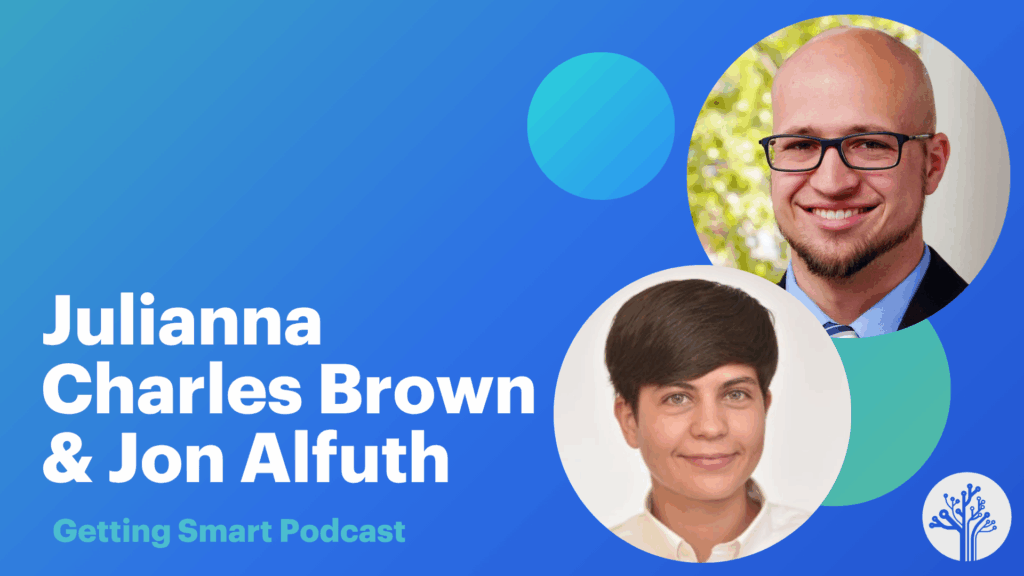
In this episode of the Getting Smart Podcast, Rebecca Midles sits down with Jon Alfuth and Julianna Charles Brown from KnowledgeWorks to explore the “how” behind transforming education systems. The conversation dives deep into the importance of state policy frameworks, personalized learning, and competency-based education to create future-ready systems. They discuss the role of a shared vision, like a Portrait of a Graduate, in driving systemic change and aligning policy with practice. With examples from states like Montana and Washington, this episode highlights how flexible learning pathways and transferable skills can prepare students for an uncertain future. Tune in to learn about the intersection of policy, practice, and innovation, and discover how systems can be reimagined to better serve learners.
Outline
- (00:00) Introduction and Vision for Education
- (13:16) Policy Framework Overview
- (19:32) Implementing Policy Changes
- (26:06) Flexible Learning Pathways
- (32:33) State Examples and Success Stories
- (35:04) Lightning Round Q&A
Introduction and Vision for Education
Rebecca Midles: You’re listening to the Getting Smart Podcast. I’m Rebecca Midles. This week, I have been thinking more about the why and the how of transforming education. The why is evident—our world demands more from our young people. They need collaboration, problem-solving, and adaptability to thrive. But the real challenge is always the how.
How do we move from a system focused on seat time and centralized tests to one that supports future-facing, personalized learning? That kind of shift requires a coherent process to connect a district’s vision to the daily realities in classrooms. As we’ve seen in our Getting Smart innovation framework, state policy is a critical link.
That’s why I’m so excited to talk with the team from KnowledgeWorks today. We’ll dive into what it takes to build a coherent system, one where policy and practice work together—not just to talk about broader outcomes, but to actually make them possible. I am joined today by Jon Alfuth, Senior Director of State Policy, and Julianna Charles Brown, also known as Charlie, Senior Director of Systems Transformation at KnowledgeWorks.
Thank you both for joining us today.
Jon Alfuth: Thanks for having us.
Julianna Charles Brown: Yeah, great to be here.
Rebecca Midles: When you think about the future facing our young people, what does a learning system look like that prepares them for that future?
Julianna Charles Brown: Well, what I love about this question, and one of the things I love about working at KnowledgeWorks, is we actually have a team of something called futurists. Before I came to KnowledgeWorks, I didn’t even know a futurist was a thing. I might have reconsidered that history degree had I known that. But our team of futurists does something called a forecast. Every three years, we put out a forecast into the future of education. It really scans what’s going on in the world, what’s going on in education, and how we think what we see happening in the world is going to impact education. Then, we consider what education needs to do to be ready for that.
That’s actually been a practice that we’ve had for over a decade now, and it’s really one of the things that led us as an organization to commit to student-centered learning models, personalized and competency-based learning. We know that in order to prepare young people for a very uncertain and rapidly changing future, they’re going to need to be equipped with skills that can transfer to a lot of different types of scenarios and situations—what we call transferable skills or competencies. We know that systems equipping young people with those skills are going to better set them up for a rapidly changing future.
Jon Alfuth: Yeah, thanks. And Charlie, I think just building on that a bit, you know, what does that system look like? It really looks like a system that engages students—one that creates more personalized learning opportunities for them, one that really allows them to be more prepared with more real-life, engaging experiences for that future. Unfortunately, I think we’re seeing right now that schools aren’t necessarily going in that direction.
There was an OECD survey recently that looked at over 80 countries and found that almost half of all students agreed that school hasn’t prepared them for adult life. The same survey found that less than half of students were being connected to workforce exploration experiences. Life trajectories are just changing too. We need a system that recognizes that not every single student is going to follow the same paths they may have traditionally. If you look from 2019 to 2024, you see a significant decrease in the number of students going right into a four-year post-secondary institution and about a doubling of students going right into a career path. So again, I think our education systems really need to think about how they can restructure to acknowledge that this is the reality students are starting to face.
Rebecca Midles: Great points. I’m just going to insert here a shameless plug for what Charlie mentioned—the futurist work at KnowledgeWorks. If you’re just listening to this and you don’t know about it, that’s the kind of conversation we’re surfacing today. But that activity can be done at the district level or the school level. It had a huge impact on me the first time I did it. Sometimes I just read the papers, and sometimes I went through the actual experience. It’s wonderful to think about plugging that in here as well as we talk about what the systems need and what we want for our young people.
So, you just talked about changes and transformations. What are some of those that K-12 education needs in order to get to that future? What are some examples or ideas around that?
Jon Alfuth: Sure. You know, I think kind of going down to some of the detailed levels—and I think Charlie can talk a bit more about some of the higher-level concepts that run through all of these things—but I think a lot of the reason, and this is something that I see too with the students I coach and my own kid, is that the structure of K-12 education is built for a very different time. We still have students that are largely moving through classrooms at the same time every single day, 180 days in the school year, with long summer breaks in the middle. Our general high school course structures are pretty much all the same. They’re still based around the idea of the Carnegie unit, which ultimately assigns you a letter grade that may or may not actually tell you something about what that student actually knows and is able to do coming out of that class.
For the last 20 years or so—forget exactly when No Child Left Behind was passed—we’ve really been basing our whole structure of accountability around either very narrow measures like math and reading scores or thinking more about measures that can be standardized across the state but don’t necessarily reflect the needs of individual communities. So, I think for me, it’s about how we really push ourselves to think differently about how schools are organized, what students should be able to know, how we’re going to track that, and how we’re going to figure out whether students are getting that knowledge. Then, how do we make sure that students are making progress toward that vision? Charlie, I don’t know if you want to say anything about the broader overarching themes that run through some of that.
Julianna Charles Brown: Yeah. Well, and I think, Jon, you’re really talking about what it looks like to change school in service of a different common purpose, right? And I think that when we—and in fact, the first area of our state policy framework really addresses this idea of common vision—what we know when we talk to young people, and this has been true for years, is that when we ask them, “What would you want to walk out of school with? What are your goals for what you could do here with your education?” they are not often talking about accumulating credit hours. They are talking about a higher purpose of being prepared for life.
Julianna Charles Brown: When we really dig into that, what that looks like is being able to communicate, being able to collaborate, right? And so you’re going to hear me throughout the course of this conversation today talk a lot about transferable skills because what those skills represent is a rethinking of the way we talk about the purpose of education, right? Because right now, as Jon was kind of mentioning just now, all of our systems drive toward a purpose of accumulating credits aligned to discipline-specific coursework. And I’m not saying—and I don’t think anybody in KnowledgeWorks would ever tell you—that discipline-specific coursework should go away. It’s not a good thing to do, right? The disciplines are a fabulous way to understand and to structure our understanding of knowledge.
However, when you talk to young people, and in fact when you talk to their parents, and when you talk to their future employers, and when you talk to their pastors and their sports coaches, they’re not talking about accumulating credit for discipline-specific coursework. It’s about these larger skill sets that we know young people need. So we call those competencies. But what those competencies represent is a different shared purpose for education. And I think just really starting there is such an important way to start the conversation. And from that, what we know is when you are orienting to a different goal, everything about what you do has to change. And so it’s almost like a Pandora’s box where it’s like, if we agree that the goal is for every young person to walk away with a set of, you know, four to 10 highly transferable skills, every single thing about the way we structure school could change. And I think that could be an overwhelming statement, but I want to frame it as an invitation. It’s actually really exciting because you are getting to a point where young people aren’t asking you why they have to learn something because everything they’re doing is aligned to those skills.
Rebecca Midles: So true. So we’re talking about systems change, and I have you here to talk about your policy framework. So let’s talk about that. Let’s move into that piece. How does that support schools and districts, like you’re sharing, in moving toward that level of systems transformation?
Julianna Charles Brown: Just on a real tactical level, when we talk about the shared purpose concept, what that looks like in a policy conversation is how you set the goal for an education system. So, our framework really begins with this common vision. But what that looks like on a tactical level in a policy situation—and the most common way we hear it referred to—is states establishing something called a profile or a portrait of a graduate or learner, right? And what that is, is the community gets together, they say, “Hey, what do we really want young people to walk away from our system with?” And then that gets articulated into this picture of what it looks like for somebody to graduate from that system. From there, what you can do is you can take each one of those—what they typically are is an articulation of a transferable skill or a super important high-value understanding, like a strong communicator or being civically responsible, right? These things that are like, “Wow, if young people could do that.” Then you break those apart into something called competencies, and you talk about what it looks like to achieve that at an early elementary level, what it looks like to achieve that at a middle school level, and then what it looks like to achieve that at a high school level. And that’s what a competency learning progression is, right?
And all of that is actually policy—what we might call little P policy. Then, when you ladder that up to state policy, the things that start to get impacted by that are: How are we assigning credits based on achievement in those skills? What’s the relationship of those things to our standards, and how do we want to deal with that? Do we want these things to exist at the state level, or is the state framework a model and your local community gets to establish their own versions? We start to get into some really interesting Big P policy conversations when you’re aligning to that shared vision.
Rebecca Midles: Do you have a stance on whether you say profile or portrait, or does it matter to you as KnowledgeWorks?
Julianna Charles Brown: What matters to us is that it matters to the community, right? So, what resonates most with your learning community is going to be the right thing to call it.
Rebecca Midles: Great. Thank you.
Jon Alfuth: Yeah, I know I’ve heard some communities argue they like “Portrait of a Graduate” or “Profile of a Graduate” because it speaks to the high school element. Other communities specifically like “Profile of a Learner” because then it’s not just high school-focused. So, you know, I think it really is contingent on who we’re working with.
But I think zooming out for a second too, like Charlie, you were talking about some of the tactical things that we include in the framework. This whole framework is actually our third iteration. The first one, I believe, was out in 2018 or 2019. This predates either Charlie or me at KnowledgeWorks. Then it was updated pre-pandemic. So, this is the third version of it. It really draws on several years of direct state policy work in this space.
Policy Framework Overview
Jon Alfuth: If you had to boil it down to two different concepts of what it advocates for, it’s policies and implementation steps that either reinforce what that vision is that Charlie was articulating—that profile and the competencies—or remove barriers to achieving that vision. There’s probably some overlap in both areas, but functionally, it’s about how we set up a structure that reduces the hoops that schools and districts have to jump through while still maintaining guardrails where it’s reasonable to put them around innovation. It’s also about really empowering them to take the initiative and figure out how they can create these meaningful learning experiences for their students.
So, if I can just take you briefly through the framework, some of those things include that system purpose that Charlie was telling you about. At KnowledgeWorks, we’re not just about competency-based learning, but we have a personalization element too. Flexible learning pathways, I think, are a huge part of that, both for elementary through high school, but those tend to appear a lot in the high school space. We also really emphasize the importance of policy flexibility that empowers those districts to innovate and then making sure that you’re measuring systems with accountability and assessments that are capturing those things that really allow schools to make progress toward the vision. At the same time, they empower communities to implement those supports that are helpful in the classroom.
And then, of course, educators are probably the most important part of the system because they’re the folks implementing this work on a day-to-day basis. So, how do you make sure educators are prepared, constantly updated, and supported as they’re doing this? Making sure that students have the support structures they’re going to need in place to take advantage of opportunities. And then, again, making sure that funding is there—whether it’s funding to support the growth of innovative practices or ensuring that schools and districts aren’t penalized if they try to innovate.
Rebecca Midles: That’s great to highlight. I know before, in other iterations, you would often talk about the way it was meant to be used, but it’s great to see them coming together in this format. We have a link in our show notes for people to find out more information about the KnowledgeWorks policy framework. If you want to see the visual or go to the sources, we have the link in our notes. Thank you for sharing that piece and the implementation. It does make me think about the crossovers that we’ve all talked about before this call today—about our innovation framework as well as how that really aligns well with the policy framework and how they complement each other.
You guys have had a chance to look at that. What were the highlights that you saw for crossover, or what ones would you want to share?
Jon Alfuth: Yeah. You know, it’s interesting because I think there are a lot of things that directly connect to elements of the framework. I mean, community vision—that’s essentially our system purpose. We had a lot of conversations about what our stance was going to be on statewide portraits of a graduate. There are 20 states—about to be 21. I think, actually, as of recording this episode, it’s 21 because I think New York has officially passed theirs into law. But our position that we essentially took is we think it’s valuable for states to have a model portrait, but that allows communities to either adopt that or create their own. We’ve really seen the power that comes, I think one other connection I would emphasize—and then, Charlie, I’d love to hear your thoughts too—is that learning ecosystem. It’s about having those broad ranges of opportunities, whether it’s in the building, outside the building, virtual, or in-person, that allow students to really explore things that interest them. It also allows them to make progress toward both academic knowledge and those higher-order knowledge and skills.
Julianna Charles Brown: Absolutely. And I think the one that’s really coming up for me—again, I’m going back to those transferable skills—is when we look at the community vision piece and then get to the “what.” So, we’ve got our “why,” which is our community vision, and then our “what,” which is our outcomes. We’re talking about thinking differently about our “what.” It’s not just math content knowledge for the sake of math content knowledge. It’s like, yes, absolutely still math content knowledge—not saying no math content knowledge—but in the service of being able to think deeply, process information about the world, and solve really big problems.
To just get really bold and ambitious about the outcome of what a system can be, and then from there, I think a really cool piece of this framework is that strategy layer—or what you call strategic implementation. Jon walked us through the eight policy areas and mentioned that we are talking both about the actual policy as well as implementation moves. I see that as a connection between what you’ve articulated there as strategic implementation. Because again, if we’re not thinking about how somebody is going to actualize an innovation, a policy, or a flexibility, it’s not worth it to have the policy itself.
What’s also interesting about that is the way we’re thinking about policy systems that are responsive to what’s happening in the field. What I like about both of these frameworks is that they could create a common language between lots of different constituencies. The one I’m thinking about right now is those folks who are working to implement in the field and the policymakers themselves. Let’s use these frameworks so that we can work more effectively together.
Another group of constituencies is policymakers working across contexts. Let’s use these frameworks to organize our conversations so that if you have a framework that provides you a shared language to organize your conversations, you can get that layer deeper. That just allows a lot more effective, efficient collaboration across layers of the system, constituencies, and contexts. I feel excited about all the alignment between both of these frameworks and the conversations they’re going to allow people to have in the field.
Jon Alfuth: Rebecca, if I can jump in with one other thought really quick. I was just scanning back over your framework, and one thing I think you all have done a lot of great work on is that whole signaling element. Taking the frameworks and the structures that Charlie was highlighting, how do you actually communicate this in a way that is meaningful? I alluded to this in some of my opening remarks—the report card, the A or the B—what does it actually tell you about what a student can do? It tells you, I know when I was in high school, I was that kid who would say, “All right, I’m going to do the bare minimum to get that 90%,” which was an A in my school. So, I remember going into one of my finals for my senior year and knowing exactly the percentage I had to get to get an A. That dictated my effort—it was the game.
Shorts Content
Implementing Policy Changes
Jon Alfuth: It can tell you that a student can game the system, or it might tell you something about their knowledge and skills. But I think for us, we’re starting to take this framework and think about how we apply it much more broadly to areas like, for example, high school transformation. We’re currently doing a six-state network in partnership with the National Association of State Boards of Education. The whole idea of signaling has come up frequently with a number of our states, both in terms of how you might design a transcript that communicates this information and how you could even start by assessing those skills and then signaling them through things like state accountability systems. This feels like a really important element of that framework that I can see you all grappling with and us also grappling with. It’s going to be even more important as artificial intelligence tools for assessments and personalized learning become more prevalent in schools.
Rebecca Midles: Right. Yeah, I was hearing a lot of that too. I mean, I definitely heard that in the opening with the “why” and “how.” I loved when you were just mentioning the signals piece, Jon, but also, Charlie, earlier when you said the Big P, little P—you were actually referencing that in the context of the “what” and the outcomes, which is so true. I love having that connection made for people who are well aware of our framework and maybe don’t know KnowledgeWorks. It’s just a great complement to see those connections. We just love showing that partnership we all embrace easily.
One of the things you also mentioned that I wouldn’t mind making a point of, Jon, is that you talked about making a stance on the state portrait work. I know that we, not too long ago, were able to collaborate and support a state that had intentionally set up a portrait with questions and then partnered with you guys to align competencies with that. It made space for people who already had a district portrait of a graduate or a school that already had a portrait to find themselves within those open-ended questions. It’s one of the few examples that have done that, I think, in Nevada. That was really, I think, helpful for people to see because sometimes I think people are reluctant to do a state portrait because they feel like too much time has passed. There are too many districts that have them already. It’s going to be interesting to do that. I thought that was a really unique way to do that and just wanted to highlight that work too because it made me realize we hadn’t talked about that.
Along that line with the portraits that you’ve done and the state work and the competencies you’ve set up, how do you think people are redefining those outcomes to include skills like communication, collaboration, problem-solving, and adaptability? What kinds of policy shifts are necessary for states to recognize these broader outcomes?
Julianna Charles Brown: I think one of the very first things you’re going to run up against is this concept of or relationship to standards. Right now, our standards frameworks are the articulation of our goals for learning. They are how we align all the systems of crediting, which ultimately lead to credentialing, which ultimately leads to assessment and accountability measures. I think it’s actually a potentially underexplored area of the conversation. People always want to jump to assessment and accountability first. And those of you that know me know I’m more than happy to talk about assessment and accountability. Aligning those measures is incredibly important.
But if we are not talking about the goal first—the thing we’re trying to do first—you can measure the wrong thing six ways to Sunday. If it’s not the thing you actually want your system to do, then it gets really tricky. Tactically, that’s a really complex conversation because the open secret about standards frameworks is that they are not standardized. Every content area may have a different set of standards. Of course, there are some national frameworks that a lot of states have adopted, but different standards frameworks treat the organization of their content differently. You might have domains and sub-domains, or you might have skills over here and critical understandings over there.
I say all that to say that when we talk about transferable skills, they may already show up in your standards frameworks. Some frameworks have math practices. The NGSS (Next Generation Science Standards) have scientific practices that are what we might call competency-like. If you, as a state, are saying, “Okay, we’ve got our portrait over here, and we’ve articulated five to 10 things that we want students to do,” our standards are also sort of articulating those things in a different way. Then, just put all that in front of a teacher and say, “Good luck. Teach it all.” Teachers are like, “Come on, how am I supposed to make sense of all this?” I think there’s a lot of nuance in parsing that out. It’s something that we see people kind of dancing around, but I’m really excited to see a state ambitiously say, “We’re going to really tackle this problem and figure out how our standards and our competencies align.” So, if you want to do that, give us a call.
Rebecca Midles: Sounds great.
Jon Alfuth: Yeah, and just building off of that, I would 100% agree, Charlie, that the first step really is articulating that vision for what you actually want your state to do. I think every one of these pieces in the framework is important. But the next step would probably be thinking about how you reinforce that those things are important. This is kind of a catch-22 because accountability is the number one mechanism by which states reinforce that structure. The reality is that there’s a certain limitation given what’s currently in federal statute around how states can actually innovate within that federally mandated accountability structure.
Flexible Learning Pathways
Jon Alfuth: I think that goes back to what you were saying, Charlie, that it’s all about how you support, track, and calculate progress—figuring out how students and districts are making progress toward that vision. Some states that we’ve come across are maybe looking below the accountability structure, thinking about things like graduation requirements, which states really do have a lot more control over. They’re thinking about how to structure those in such a way that it incentivizes a district to approach how they’re doing their high school structures differently. Even within accountability systems, some states are thinking about how to make a parallel system to their state system that really reinforces a more locally driven accountability approach that is more meaningful to communities.
Rebecca Midles: Yeah, I hear you also talking about rethinking policy that enables flexible learning environments and pathways. I think that’s where you were headed. Would you have anything more you’d add to that? I know I was asking about broader outcomes, but I moved just now on you onto flexible learning spaces. Is there anything else you would add in that piece?
Jon Alfuth: Yeah. You know, I think it’s actually interesting. We’ve done this series of resources for, I think, seven or eight states now. Most of them are public; a couple are still in progress. We call them innovation guides. It’s essentially a merger between stories of districts that are innovating and the policy flexibilities that empower that innovation. A lot of what we see whenever we talk to districts doing this at the high school level is that flexible learning pathways play an essential role in that innovation.
There’s a district in Pennsylvania that essentially had virtual learning programs so that students who wanted to do other things during the day, like high-level amateur sports, could practice during the day and do a virtual, self-driven learning experience in the evening hours. Or you’ll have districts thinking about how to get students onto a farm to have those kinds of experiences. That was in our Pennsylvania innovation guide, which is available online through a group called Remake Learning. Fundamentally, another barrier that we’ve seen come up with flexible learning pathways is the idea of scheduling and graduation requirements. A lot of districts have certain requirements, and those requirements don’t always leave a lot of space for students who want to take another pathway to engage with those opportunities. In my home city of Washington, D.C., we’re currently going through a process to reimagine the graduation requirements in the district. I think the hope is, in part, to create more opportunities for students to explore learning pathways that are more meaningful to them. D.C. also has a competency-based flexibility waiver that could allow students to explore a graduation pathway or earn credit through a competency-based course. That’s how some of this ties back to the flexible learning pathways piece. Anything you want to add there, Charlie?
Julianna Charles Brown: Can you restate the question for me, and then I’ll sound brilliant?
Rebecca Midles: Yeah, we were talking about flexible pathways and policy changes that needed to happen in order to support that work around learning environments that are flexible.
Julianna Charles Brown: Mm-hmm. Yeah, I think there’s a lot of—maybe I’ll say it like this. I think with regard to flexible pathways, one of the things that often really comes up when you have these conversations is the implementation aspect. It’s not necessarily a big P policy barrier that’s getting in the way. It’s some of the things that you don’t even think about. I was actually with our friends in Southwest Pennsylvania the other day, talking about their personalized learning goals, and district leaders there were elevating transportation as a key challenge. They were saying, “We want to be really flexible, but how do we get kids to where they need to be?”
From a state policy perspective, that’s not a big P policy barrier, but what can you do in order to ease the glide path toward flexibility? Do you have working groups, like they have in Southwest Pennsylvania, where district leaders who are trying to get this movement going are working out the problems like transportation? Do you have transformational learning grants, like they have in Montana, where it’s helping districts design what they want to do and then apply for a learning grant so long as it’s aligned to transformational learning?
Again, because I think where the rubber meets the road is, sure, you are allowed to offer really flexible learning environments, but then when you actually go to do that, it’s a lot more complex than people might realize on its face.
Rebecca Midles: Some themes. You’ve mentioned some states. Let’s, if you don’t mind, move into some samples or examples that you might share. Some might say exemplars of what states are doing this at a high level that you could highlight for us.
Julianna Charles Brown: Jon, do you want me to start?
Jon Alfuth: Sure. We can maybe go back and forth. We can pick our spotlight states—I won’t say favorite states—but our spotlight states.
Julianna Charles Brown: Well, I would double-click on the work that Montana is doing, because I was just talking about them, but also because they’re really, as a state, moving in a lot of interesting directions. In addition to transformational learning grants, they’re doing some work around their statewide assessment. They actually have a first-in-the-nation federal assessment waiver—not through the ESSA-provided Innovative Assessment Demonstration Authority program, but actually just through a waiver. They were able to redesign their statewide assessment. That work is ongoing.
What’s really exciting about the way Montana is thinking about this is they’re seeing it all as connected. What we’re learning from the implementation of our assessment may inform how we’re supporting transformational learning. I think that work is really exciting, and I’m excited to see where they’re going to take that going forward. Jon, passing the ball to you.
Rebecca Midles: Let’s just do one more example, and then we can put more examples in the show notes too.
Jon Alfuth: Excellent. I won’t say this example, Rebecca, just because it’s you and you happen to live there, but I’ve been talking a lot about Washington lately. Washington is a great example of a state that has long been advancing mastery-based learning and is continuing to do so. I’m oversimplifying it, but it’s a state that started with a working group a number of years ago that was legislatively mandated. That led to a statewide mastery-based learning collaborative network with a few dozen school districts that are really working to implement this work around the state.
The state has put together a model portrait. They have a waiver opportunity. They have flexibility in their graduation requirements. There’s been consistent state funding over the years. I would say Washington hits a lot of those policy conditions that are in our framework. They just made another investment from the state legislature this past year.
Washington is also doing some really interesting, innovative things. It is, I think, one of one or two states—maybe the only state right now—that has a legislative mandate for a process to put a statewide mastery transcript potentially into play. That’s something that our friends at the State Board of Education are currently working on. It gets back to the whole idea of how you scale this and how you catalog it. So, Rebecca, I hope I said enough good things about Washington there.
Rebecca Midles: Well, I love that we ended on that note with Washington. So, no, I think it’s great that you put that, and we’ll have more. As we said, if people are listening to this podcast and they want to hear more of these wonderful exemplar states from Jon and Charlie, we’ll have those there. Obviously, transforming education isn’t just about large ideas. It’s about building the systems that make them real. We’re hearing about how policy plays into that practice and community, and how they all come together. We’re going to continue to explore that for every learner and what comes next.
Jon Alfuth: I want to throw in one more. I’m curious if that’s okay. Other than Getting Smart, obviously, what is your favorite must-read or must-listen-to education newsletter and/or podcast?
Rebecca Midles: Well, I don’t do enough of those, but FLC out of Michigan has just started a podcast that’s really fun to have local leaders. As far as newsletters, I do love the updates that I get from KnowledgeWorks.
State Examples and Success Stories
Rebecca Midles: Along with the examples you’ve shared, I think it’s important to highlight how states are redefining outcomes and creating flexible pathways. You’ve mentioned Montana and Washington as exemplars. Are there any other states you’d like to highlight for their innovative approaches?
Jon Alfuth: Absolutely. One state that comes to mind is New Hampshire. They’ve been a leader in competency-based education for years. They’ve implemented a statewide system that allows districts to move away from traditional seat-time requirements and focus on mastery of skills and competencies. Their Performance Assessment for Competency Education (PACE) initiative is a great example of how states can rethink assessment systems to align with broader learning goals.
Julianna Charles Brown: Another example is Colorado. They’ve done a lot of work around creating flexible graduation pathways and aligning those with workforce development. They’ve also been intentional about engaging communities in the process, ensuring that the policies reflect local needs and priorities.
Rebecca Midles: Those are great examples. It’s inspiring to see how states are taking different approaches to address the needs of their students and communities.
Lightning Round Q&A
Julianna Charles Brown: I don’t know if you’ve ever had the tables turned on you in the Getting Smart podcast, but we may have a few questions for you.
Rebecca Midles: Oh, okay. I’m ready.
Julianna Charles Brown: Well, good news. This is a lightning round, so I’ve got five questions for you, and hopefully, the answers are going to be super easy. Ready? What is your favorite competency?
Rebecca Midles: Anything about civics.
Julianna Charles Brown: Civics. I love it. Okay, would you rather go back to the classroom and be a classroom teacher or be the leader of the U.S. Department of Education?
Rebecca Midles: I’d rather go back to the classroom and be a teacher.
Julianna Charles Brown: I thought that might be your answer. Who is the person that is inspiring you most right now?
Rebecca Midles: My daughter and her achieving past any goals that anyone ever set for her.
Julianna Charles Brown: I love that. Congratulations to your daughter. What is the best thing you’ve seen in a school in 2025?
Rebecca Midles: When students have made their voices heard to the point where they’ve walked out—this is probably not something I want to recommend for everyone to do—but when students have walked out on a policy change and made their voices heard in a peaceful, productive way, I’ve been not only inspired by what systems can do but how they help set us up as a country.
Julianna Charles Brown: That’s beautiful. Looping back to civics. I love it. Okay, and this one should be very easy. What is your favorite part or the part that jazzes you up most about the Getting Smart framework?
Rebecca Midles: I love the fact that it’s written at a big enough grain size. It’s based on about 25 to 30 years of experience and work of myself and others that have been involved in it. The fact that it’s written at a big enough grain size that everyone can see their work in that framework and see where their strengths are and what they need to do to move next. I feel like that has been a disservice for systems to not know. To be able to assess where they are and then go out and seek partners that we might recommend or put in lists or show and say, “Hey, here’s somebody like you guys that would really help you on state policy work,” and giving them the tools to just own their own transformation and navigate that journey in a way that’s respectful and supportive.
Julianna Charles Brown: Amazing. Well, thank you for engaging in this lightning round. We really did surprise Rebecca with this, so we’re grateful.
Jon Alfuth: Yeah. Charlie, can I throw in one other thought really quick? I was just scanning back over your framework, and one thing I think you all have done a lot of great work on is that whole signaling element. Taking the frameworks and the structures that Charlie was highlighting, how do you actually communicate this in a way that is meaningful? I alluded to this in some of my opening remarks—the report card, the A or the B—what does it actually tell you about what a student can do? It tells you, I know when I was in high school, I was that kid who would say, “All right, I’m going to do the bare minimum to get that 90%,” which was an A in my school. So, I remember going into one of my finals for my senior year and knowing exactly the percentage I had to get to get an A. That dictated my effort—it was the game.
Guest Bio
Jon Alfuth
Jon joined KnowledgeWorks with a deep background in working directly with state and federal education policy makers, as well as extensive experience as an educator. Immediately prior to joining KnowledgeWorks, he worked for the National Governors Association where he helped states strengthen their education, workforce and postsecondary education policies. In this role Jon provided direct technical assistance to states on a range of topics including dual enrollment, work-based learning and education-workforce systems alignment. He also previously held policy positions as an aid to Senator Richard Durbin (IL) and at the U.S. Department of Education. Prior to his work in policy, Jon spent several years as a public school teacher and administrator in Memphis, Tennessee.
Jon received his bachelor’s degree and Masters of Public Affairs from the University of Wisconsin Madison and is a proud Wisconsin Badger. In his spare time, Jon enjoys running half marathons and reading world history books.
Julianna Charles Brown
Charlie’s career began at the New York City Department of Education in policy, working with schools on programming and providing guidance on working within state regulations. Charlie also worked on the Quality Performance Assessment Team at the Center for Collaborative Education, helping teachers and schools implement equitable performance assessment systems. Additionally, Charlie co-founded the NYC Mastery Collaborative, supporting schools in their implementation of competency-based education practices and advocating for the work to grow across NYC.
Charlie earned a bachelors in American History from McGill University and a masters in Education Policy from Columbia University. Outside of KnowledgeWorks, Charlie can be found riding motorcycles, hiking and enjoying electronic music.
Links
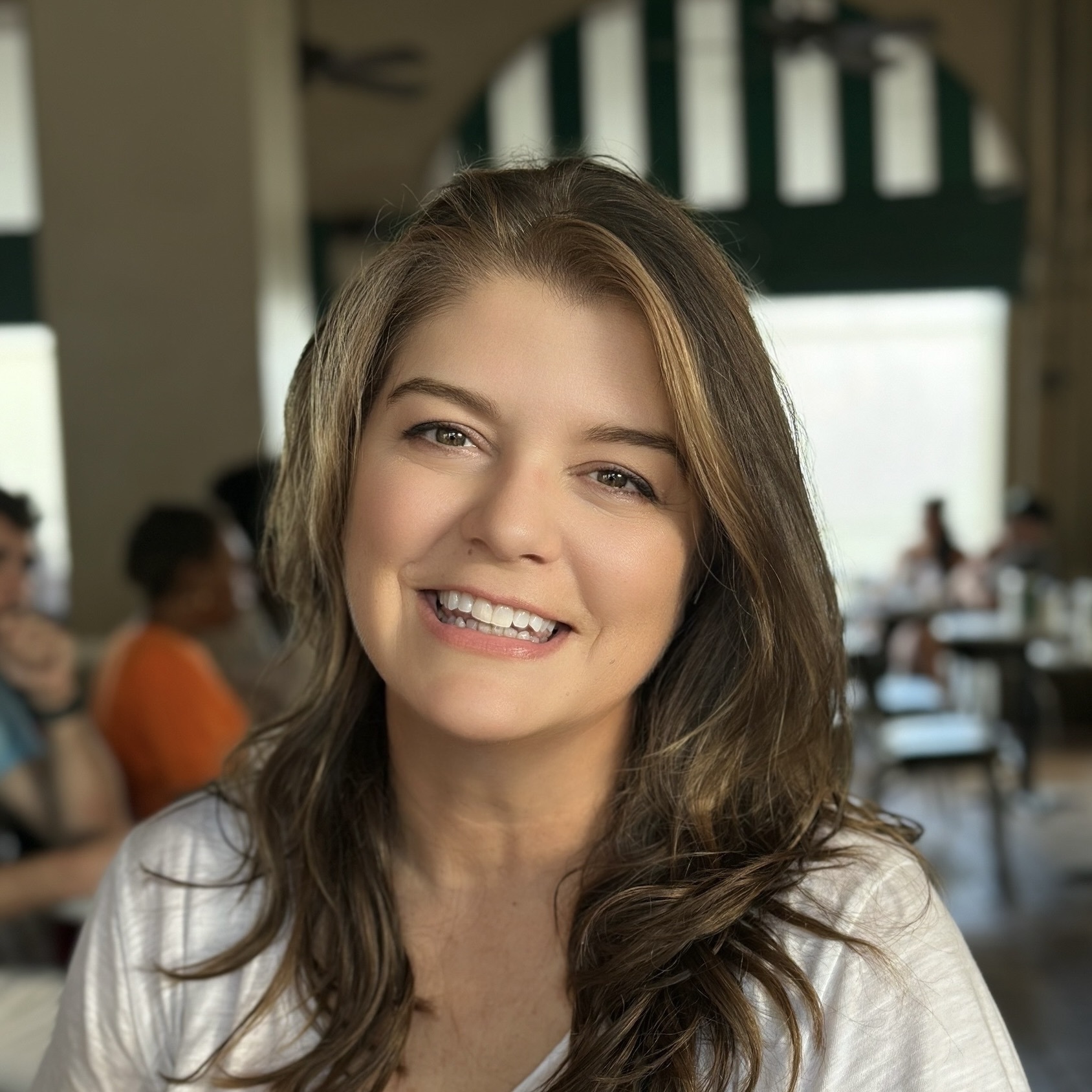


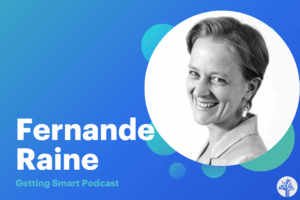
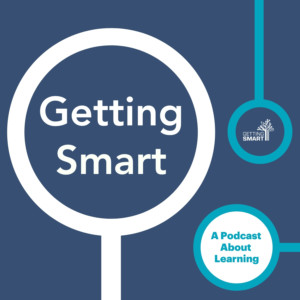

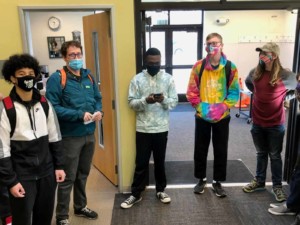

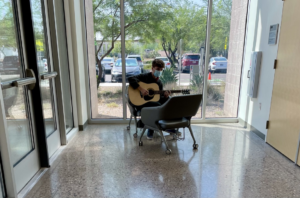
0 Comments
Leave a Comment
Your email address will not be published. All fields are required.